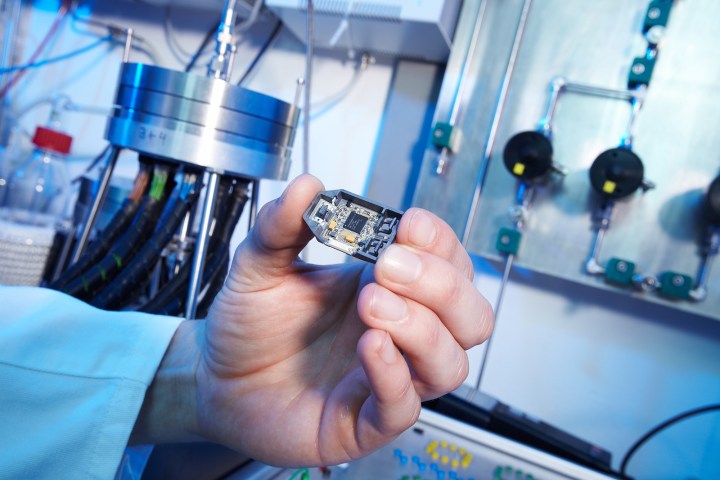
There are fire detectors that’ll detect the gasses in a fire (instead of the smoke), but these models are expensive to mass produce for the average consumer. Recent technological advances are changing this, though. A new breakthrough by researchers at the Fraunhofer Institute for Physical Measurement Techniques IPM may reduce manufacturing costs and make it possible to produce affordable consumer gas-based detectors.
In these new detectors, the researchers saved on manufacturing by using many of the same components found in traditional smoke detectors. The team then supplemented the detectors with optical waveguides that are coated with dyes. Therese dyes are used to detect the gaseous by-products of fire, with one dye for carbon monoxide and another dye for nitrous oxide. These dyes will change color based on the ambient gasses the air in a room, with purple indicating normal air and yellow signaling the presence of carbon monoxide, for example. The system is very sensitive, detecting fire early in the burning process.
Because it uses conventional smoke detectors as its base, the Fraunhofer gas fire detectors are inexpensive to produce with manufacturing costs that are close to conventional smoke detectors. Besides being inexpensive, the manufacturing process also is efficient, using a roll-to-roll process similar to newspaper printing that is capable of printing 15,000 gas measurement systems on a continuous roll.
The new sensor system created by the Fraunhofer Institute researchers promises the best of both worlds. The detectors are affordable to mass produce and react two major fire gases, carbon monoxide and nitrogen dioxide, while ignoring other gases. Though promising, these affordable and sensitive gas detectors will need to undergo further refinement and testing before they become available to consumers in the coming years.




